Fairytale Iceland
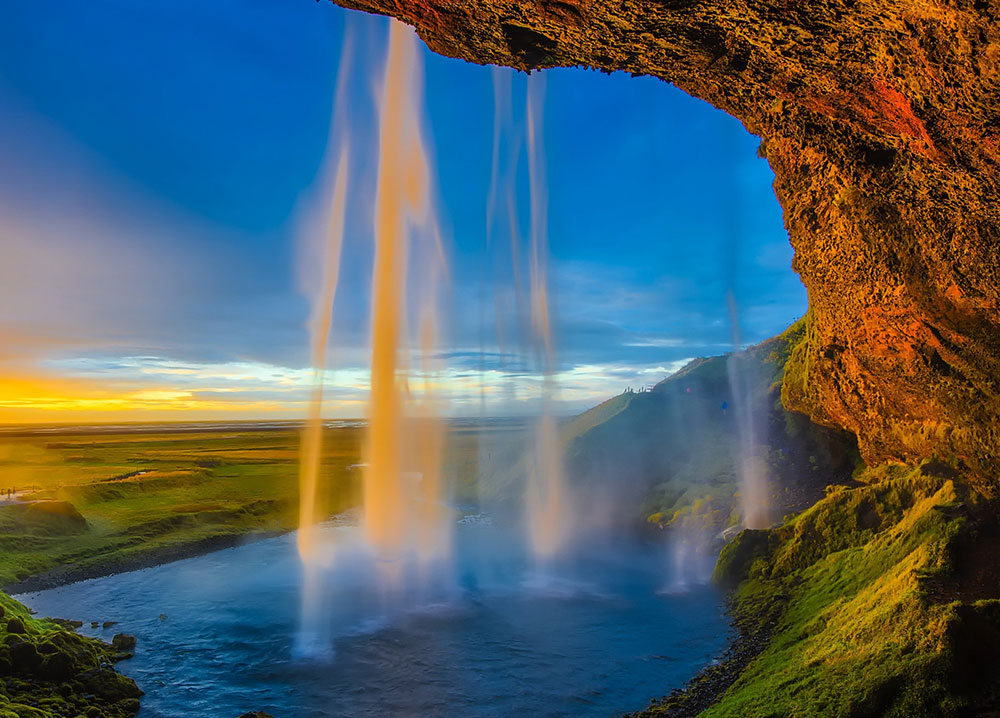
It was only around 330 BC, when the Greek explorer Pytheas wrote about the island of Ultima Thule, six days north of Britain by ship, that Europeans became aware of a landmass beyond the confines of their maps, lurking in a ‘congealed sea’. It’s believed that Irish monks were the next to stumble upon Iceland as they regularly sailed to the Faroes looking for solitude and seclusion. It’s thought that first Irish settlement here was around year AD 700. The Irish fled when the Norsemen began to arrive in the early 9th century. Iceland’s first permanent settlers came from Norway. Many early discoverers made up primarily of Norwegian seafarers and adventurers, fostered further excursions to Greenland and the coast of North America.
Many ancient travelers were drawn to this magical world back then seen as a dangerous and unkind. No wonder! Iceland is an island of striking landscapes, where rivers run through deserts and molten lava erupts from ice, Iceland is best described as a realm of stark contrasts. It is a country where the natural elements perpetually dance between the primordial poles of fire and frost, during winters with endless nights, and summers where the sun never sets. This is a fairytale world come true!
We’ve put together some of the cool, hidden, and unusual things to do in Iceland – some of the experience that makes you feel like a magical character yourself.
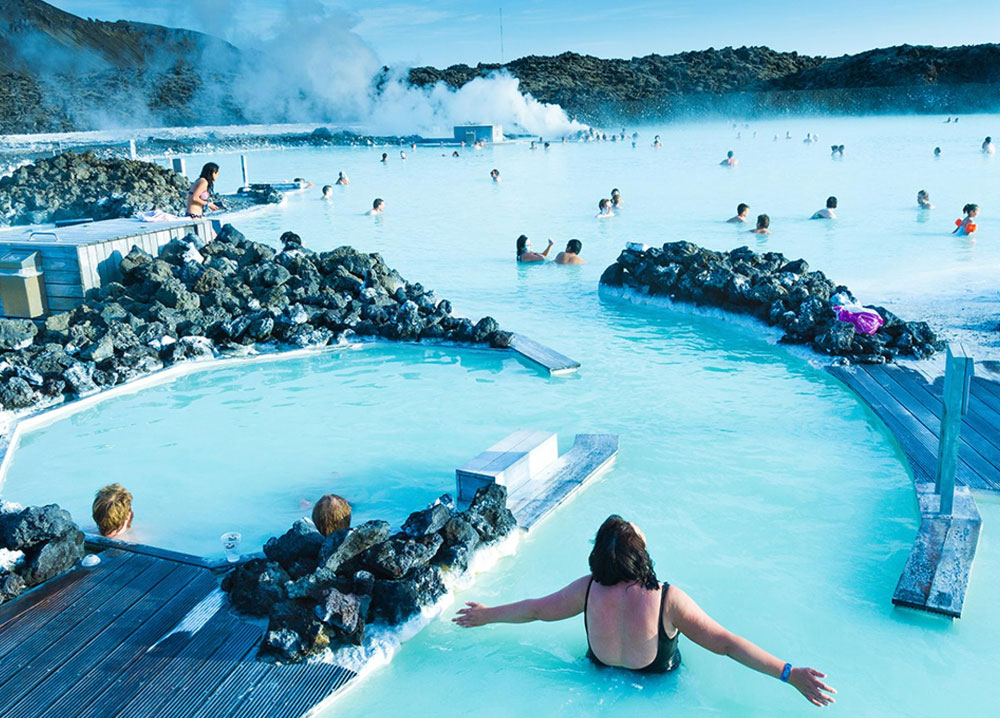
Magical Blue Lagoon
Of course, the popular Blue Lagoon is where a journey starts. This is a magical sensory experience as well as a treat for your eyes.
In the year 1226, six volcanic craters went off simultaneously causing colossal damage to the area but in the meantime creating this astonishing lava field we admire today. The Blue Lagoon is a geothermal spa located in these lava fields near Grindavík on the Reykjanes Peninsula, southwestern Iceland. But it’s not all natural wonder, it’s half man-made wonder too.
The water, the minerals, the white silica mud, the green algae, the color of the lagoon, the steam, and the moss-covered lava creates a stunning sights and feel – natural paradise. However, the way the water comes up from the ground, the way it is moved to a perfectly shaped lagoon, the even pool bottom, the temperature of the water – this is all manmade.

Picture Perfect Svartifoss
Watching shimmering white water tumbling over the coal black basalt, as it descends into the calm pool is crazily beautiful. The Black Falls, or Svartifoss, is a wonder of natural architecture inspired the design for Iceland’s National Theatre and the Hallgrimskirkja church in Reykjavik. The hexagonal columns form inside a lava flow which then cools extremely slowly, giving rise to crystallization. Similar well-known lava formations are seen at the Giant’s Causeway in Northern Ireland, and on the island of Staffa in Scotland.
The marked trail from Skaftafell Visitor Centre to Svartifoss is an easy 5.5 km (3.4 mi) circular walk.

The Museum of Icelandic Sorcery and Witchcraft
The museum focuses on the elaborate and esoteric spells and rituals that the regional magic called for which would provide such effects as conjuring a creature to steal goat’s milk or making someone invisible. The collection features a number of artfully displayed artifacts and displays such as rune-carved pieces of wood, animal skulls, and a number of Icelandic magical staves.
The museum gives a unique insight into an age dominated by superstition and magic here, in Iceland. When the heritage of a polytheistic religion clashed with Christianity, the byproduct arose in the form of sorcery. It was present in everyday life, since it was an instrument by which a person could influence their destiny, foresee it, or perhaps even shape it. Christianity became an official religion in Iceland in 1000 AD, but a developed pagan culture had already put down deep roots in Icelandic society. It was something of a bond with Iceland’s former motherland in Scandinavia. It’s a little spooky but really profound; and definitely worth a visit.
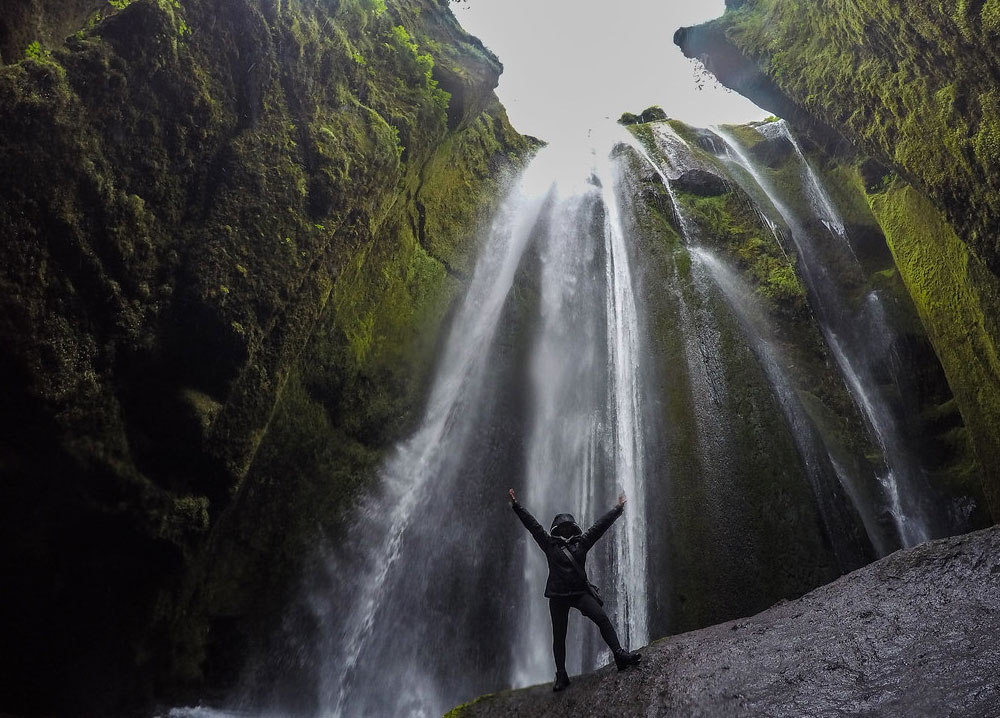
Hidden Away Gljúfrafoss
Another stunning waterfall you absolutely must have on your Icelandic bucket list. It is one of Iceland’s smaller waterfalls, although its size takes nothing away from its allure. It is actually located just behind the more notorious waterfall of Seljalandsfoss, which one can see from the Ring Road in the South. This makes Gljúfrafoss a bit of a hidden treasure as Seljalandsfoss definitely gets a lot more attention. The name translates into English as “one who lives in the canyon” – a fitting moniker for these falls as they are partially obscured by the surrounding cliffs. Walk 10 minutes north of Seljalandsfoss and you will catch a glimpse of it hiding behind the cliff face. To get inside of the canyon and into the pool area, you can enter through a small 2 meter wide opening in the front.

Bridge Between Continents
At a rate of 2.5 centimeters per year, the mid-Atlantic ridge is pulling apart the North American and Eurasian tectonic plates.
The lava-scarred Reykjanes peninsula lies on one of the world’s major plate boundaries, the Mid Atlantic Ridge. According to the continental drift theory the Eurasian and North American tectonic plates are continuously drifting apart with great forces under the gaping rifts. As the plates diverge, linear fractures, known as fissures form due to stresses created by the tension that builds up as the plates move away from each other.
The ridge is where two tectonic plates meet and seem to be in agreement to drift apart. And here you can walk between the two tectonic plates on a bridge where North America and Europe drift apart.

Sea Monster Museum Skrímslasetrið
Despite having no concrete evidence of any unexplainable creatures lurking in the waters of Iceland, this museum treats the collected accounts of sailors and other seamen as largely factual. The cultural importance of sea monster stories is so closely intertwined with the beliefs of local seamen that Skrímslasetrið could almost rightly be called a natural history museum. But, of course, it’s not. Using videos, displays, advanced multimedia, and an atmosphere of eerie mystery. Visitors can listen to eyewitness accounts, or view displays and literature exploring the history of sea monsters. There is even an interactive table where amateur monster hunters can explore a map of Iceland’s coast, following pop-up stories of the monsters seen at various points.

Viking Village Film Set
Built in 2010, the Viking Film Set is located on the land of a local farmer. For a small fee, he allows visitors to wander around the amazing location. It really transforms you back in time when Vikings were roaming these lands. In reality, it is a film set for an Icelandic movie that was never filmed, but you’d definitely be forgiven for mistaking it for the real thing. The most striking feature of the village is the buildings, which ape the architecture of the period magnificently. Guests can pry open the wooden doors and find themselves within a range of rooms that look almost indistinguishable from the real thing.
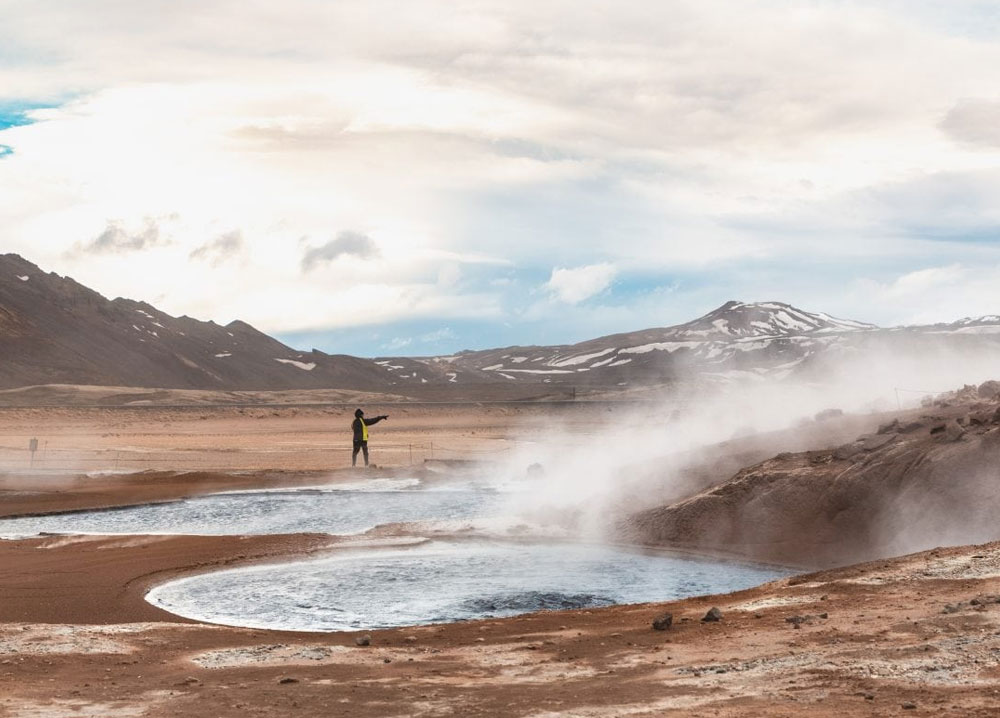
Stunning and Smelly Námaskarð
Connected to the Krafla volcano system, Námaskarð is home to many hot springs and fumaroles. This is an alien world – no vegetation grows here due to the heat beneath the earth, the acidity in the soil, and poisonous fumes being expelled. However, this isn’t a dull place; its life comes from the vivid colours that streak through the ground, dyed by the elements brought up with the steam. Expect to see shades of red, orange, yellow and green, particularly concentrated around the springs themselves. The air smells intensely of sulphur throughout the area, which, while unpleasant, is a constant reminder of the powerful forces at work beneath your feet. Though it would be damaging for your health to spend too long breathing it, a visit for a few hours will not cause any problems.

Jules Verne Snæfellsjökull
This sight is almost literally in the middle of nowhere, given the population density here. There is also nothing here. Nothing… except the entrance to the center of Earth. Or, at least, that’s according to Jules Verne’s A Journey to the Center of Earth (1864). In his novel, Jules Verne describes how professor Otto Lidenbrock’s expedition travels all the way to a volcano in Iceland, which he believes to lead to the center of the Earth after decoding some ancient notes in a runic manuscript. It’s a great read if you love to entertain your flying time with a good book. Snæfellsjökull is a glacier-capped volcano in west Iceland. This great volcano stands at 1,446 metres (4,744 feet) tall, and on clear days, is visible across the bay from Reykjavík.
Snæfellsjökull has, for centuries, been considered to be one of the world’s ancient power sites, a source of mysticism, energy and mystery for the peninsula’s superstitious population. On November 5th, 1993, thousands of people came to Snæfellsjökull as some paranormal enthusiasts believed there would be an alien landing; CNN even showed up with a camera crew. Let us reassure you that nothing happened. Maybe next time.
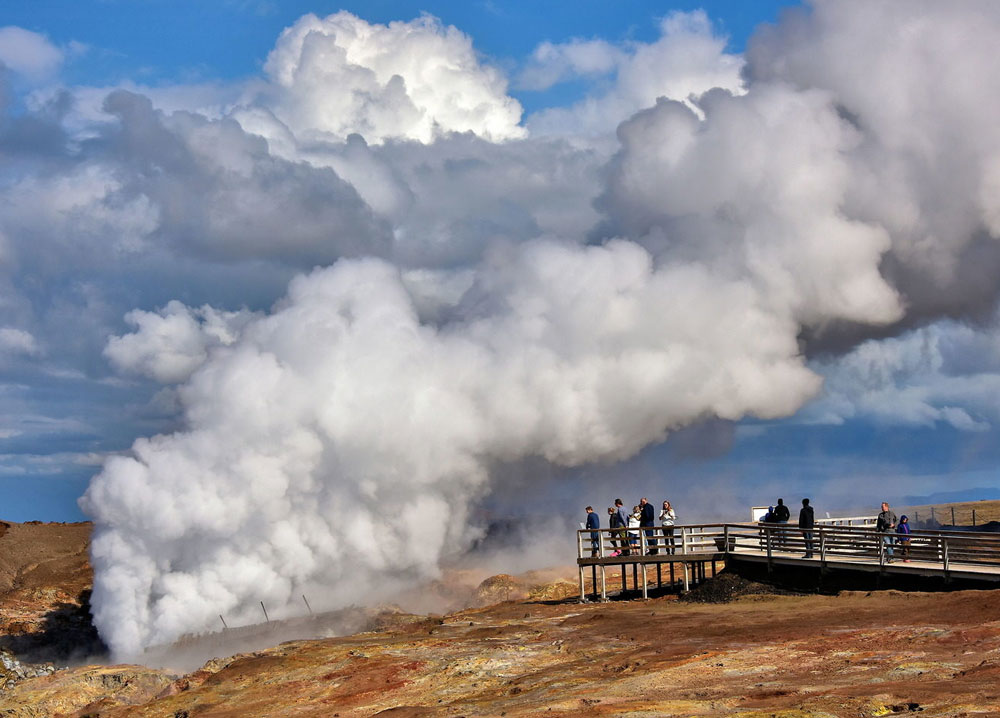
Haunted and a Little Dangerous Gunnuhver
The area is close to Reykjanes lighthouse and is collectively named Gunnuhver after a female ghost that was laid there. She had caused great disturbance until a priest set a trap for her and she fell into the spring. This happened about 400 years ago. By now, you may have noticed the common trail of superstition, spooky and quirky stories in Iceland.
The Reykjanes Peninsula is highly volcanic, due to the fact that the Mid-Atlantic rift runs right through it. This leads to many hot springs, like Gunnuhver. These springs are beautiful, but unpredictable. In one of the mud pools, it is possible to see the engulfed remains of the old path, which was consumed by it expanding.
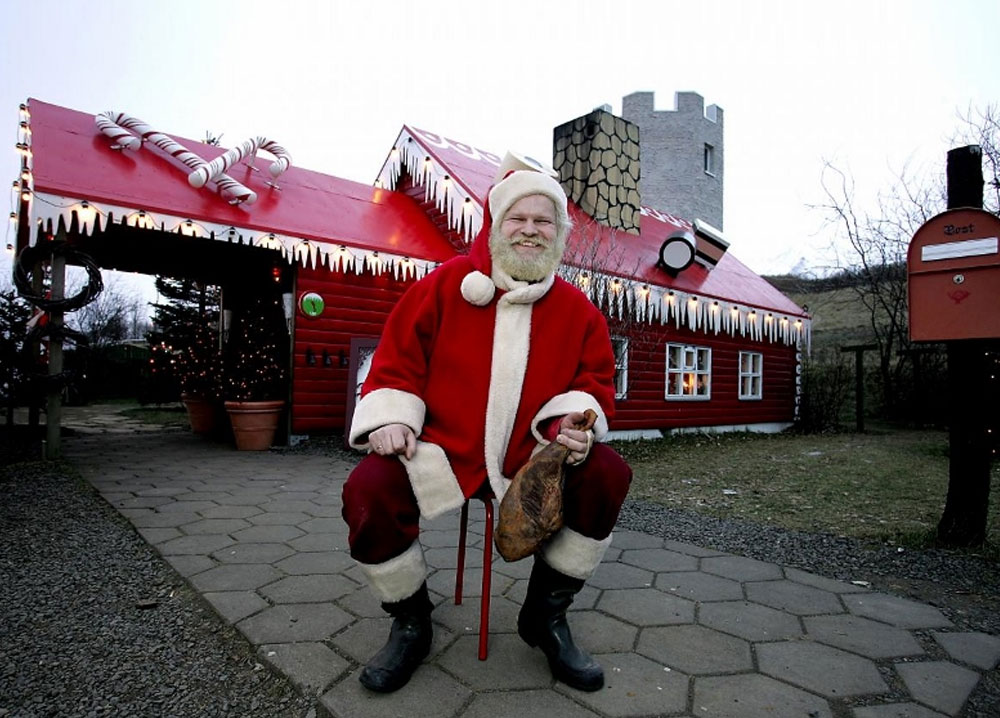
Santa's Icelandic Workshop
The magic of Iceland certainly doesn’t end here. There are so many amazing places to visit; we couldn’t possibly list them all here. But we’d be happy to help you find the most enchanted destinations in Iceland and plan your Icelandic adventure.
If want more help planning your Icelandic trip just give our team a call on 1800 242 353.
